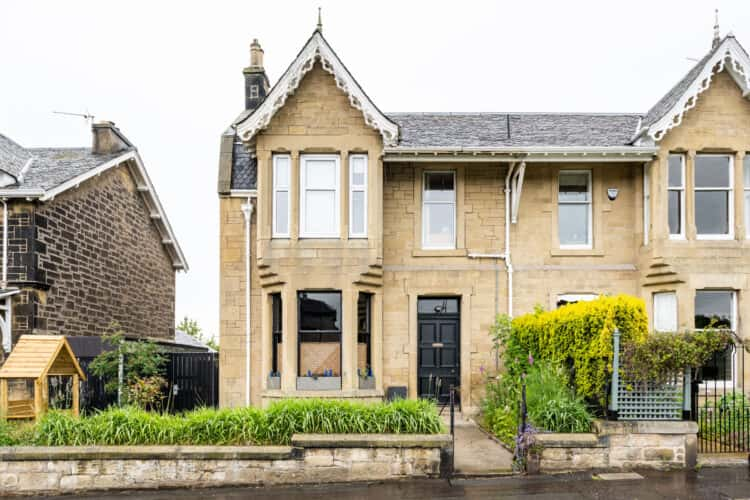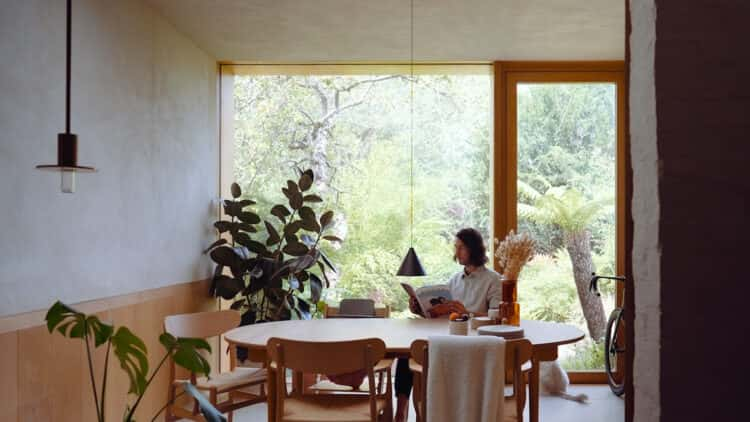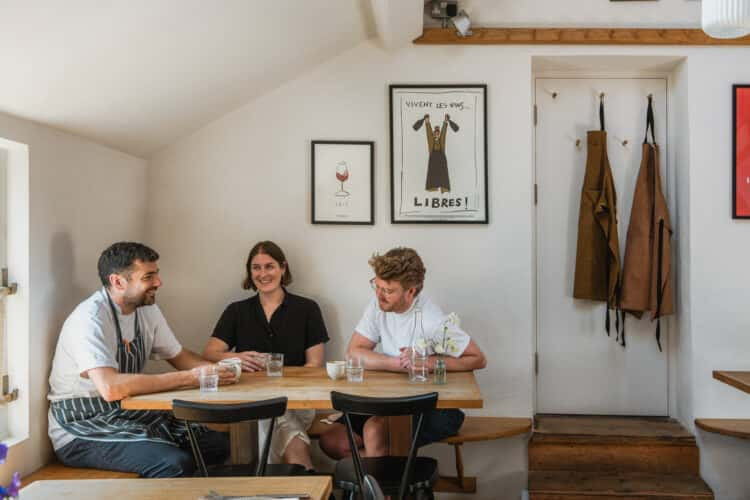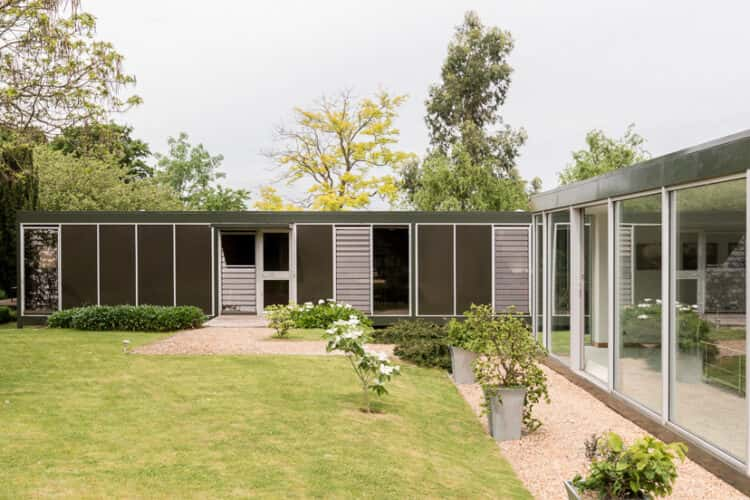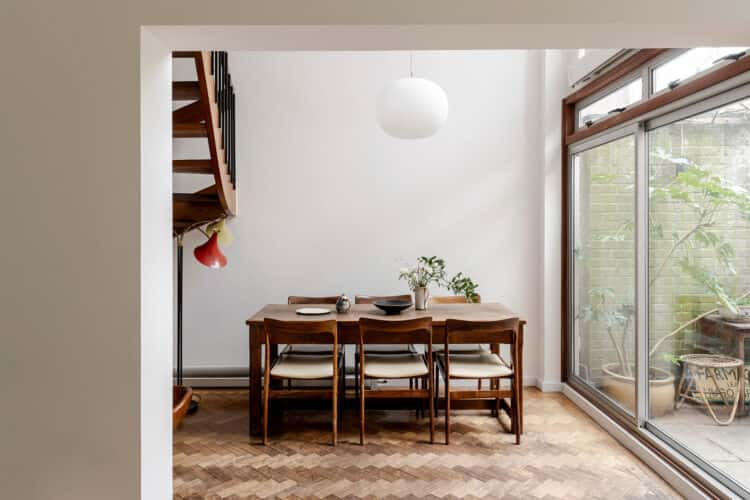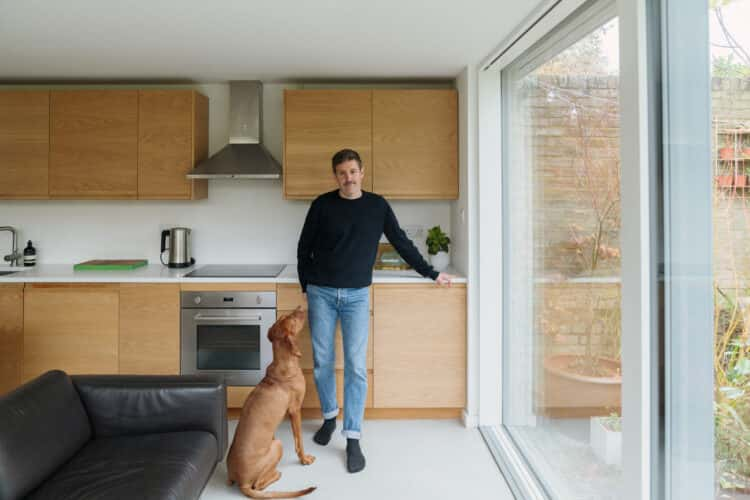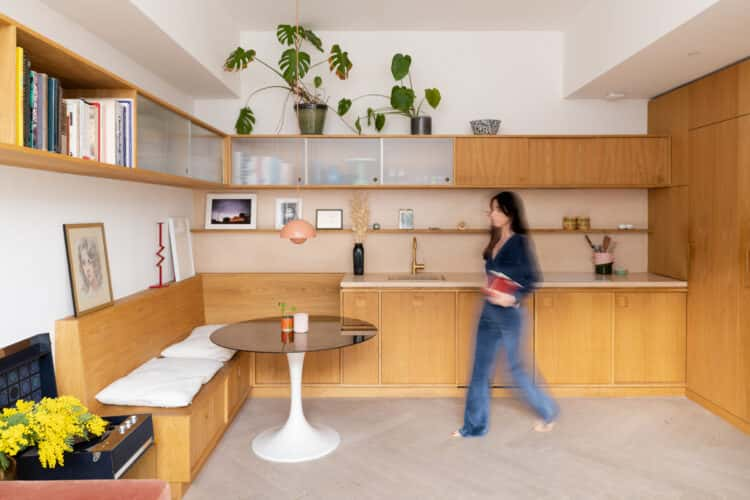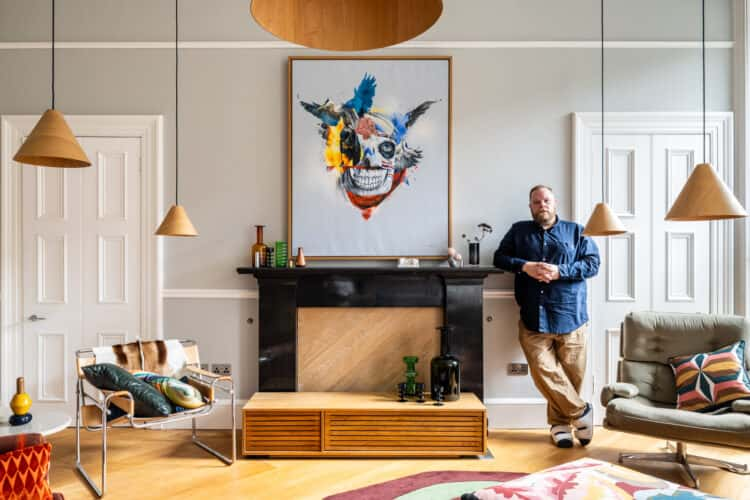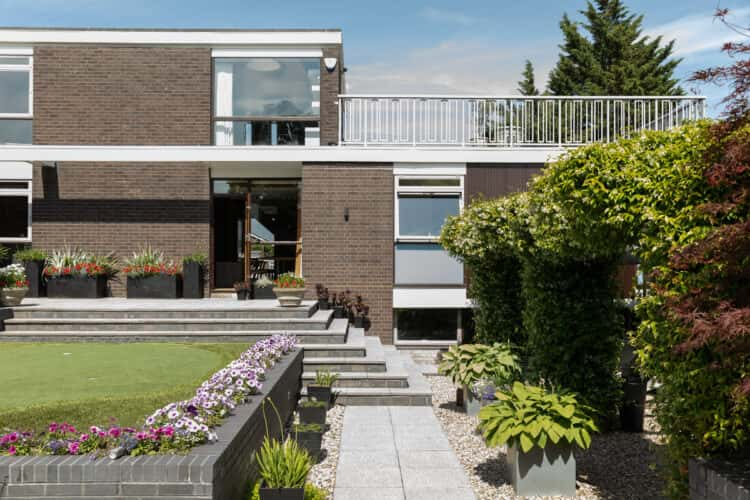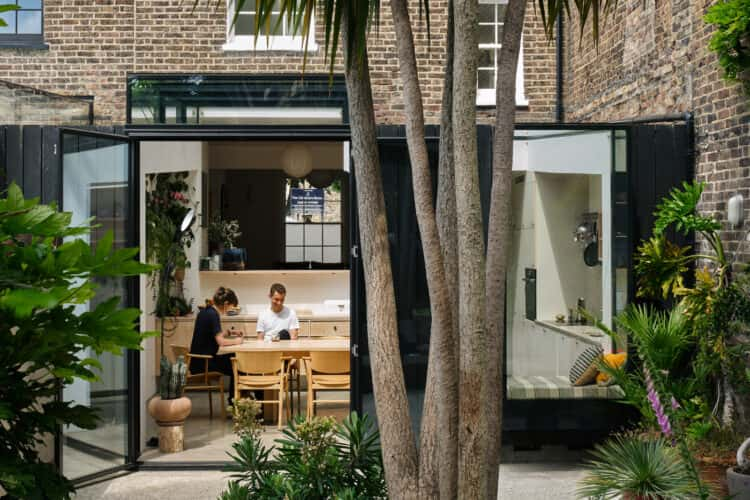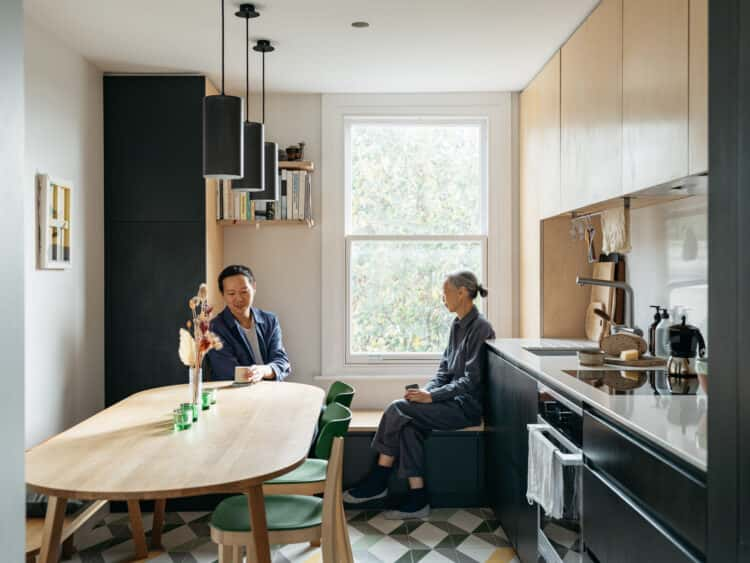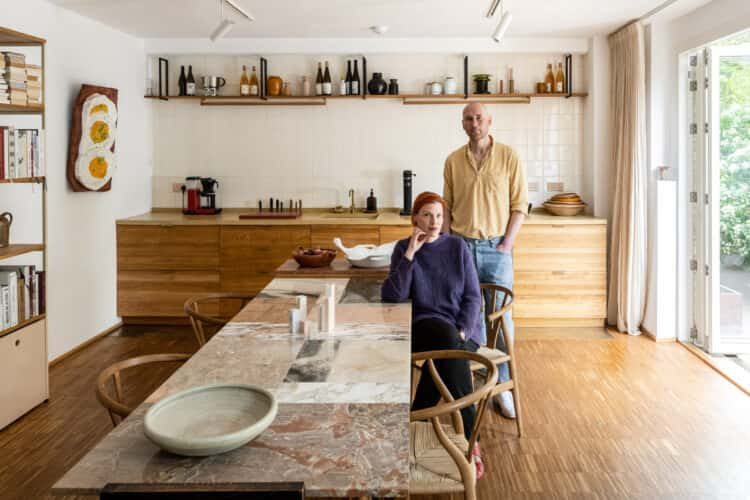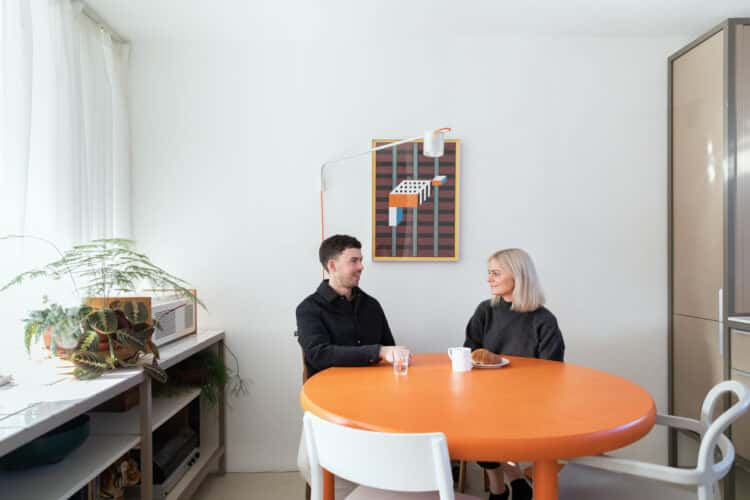How artists Amy Dennis and Neville Rae built a home in which their family and practices could grow side by side
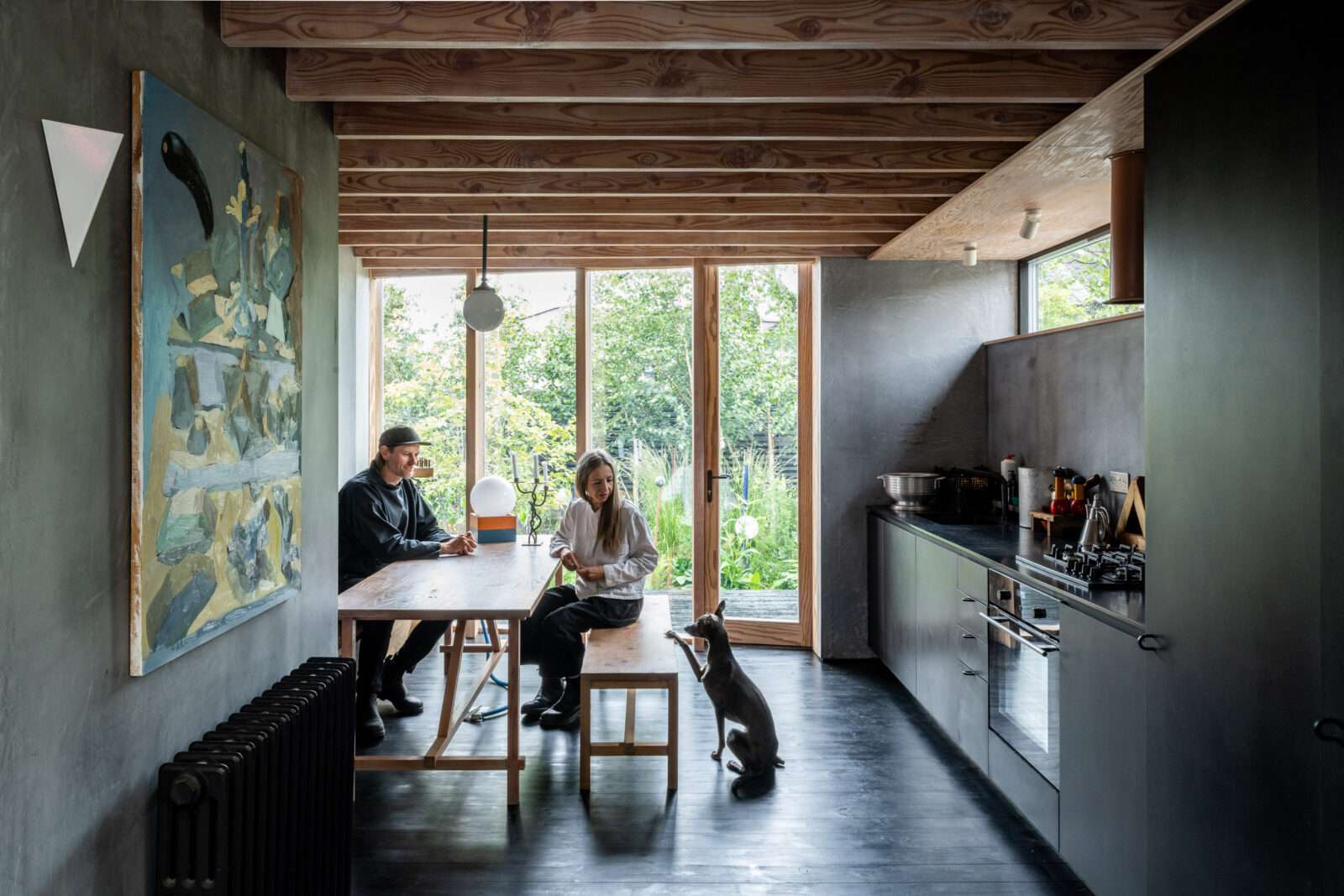
Words Danielle Pender
Photography French + Tye
Inspired by local artistic legacy, materials and the surrounding landscape, the house has served as a testing ground for the exchange of ideas in Neville and Amy’s work. Neville has brought in techniques he’s honed from running his workshop, Old School Fabrications, for the interiors and made his own furniture; Amy’s painting practice now takes centre stage in a bedroom-turned-studio and she’s adopted materials first researched as part of the build, such as pigmented and polished Jesomite. As their home comes on the market, we catch up with the couple to discuss how they approached the research and design process – and they introduce us to some brilliant Scottish talent whose work hangs on their walls.
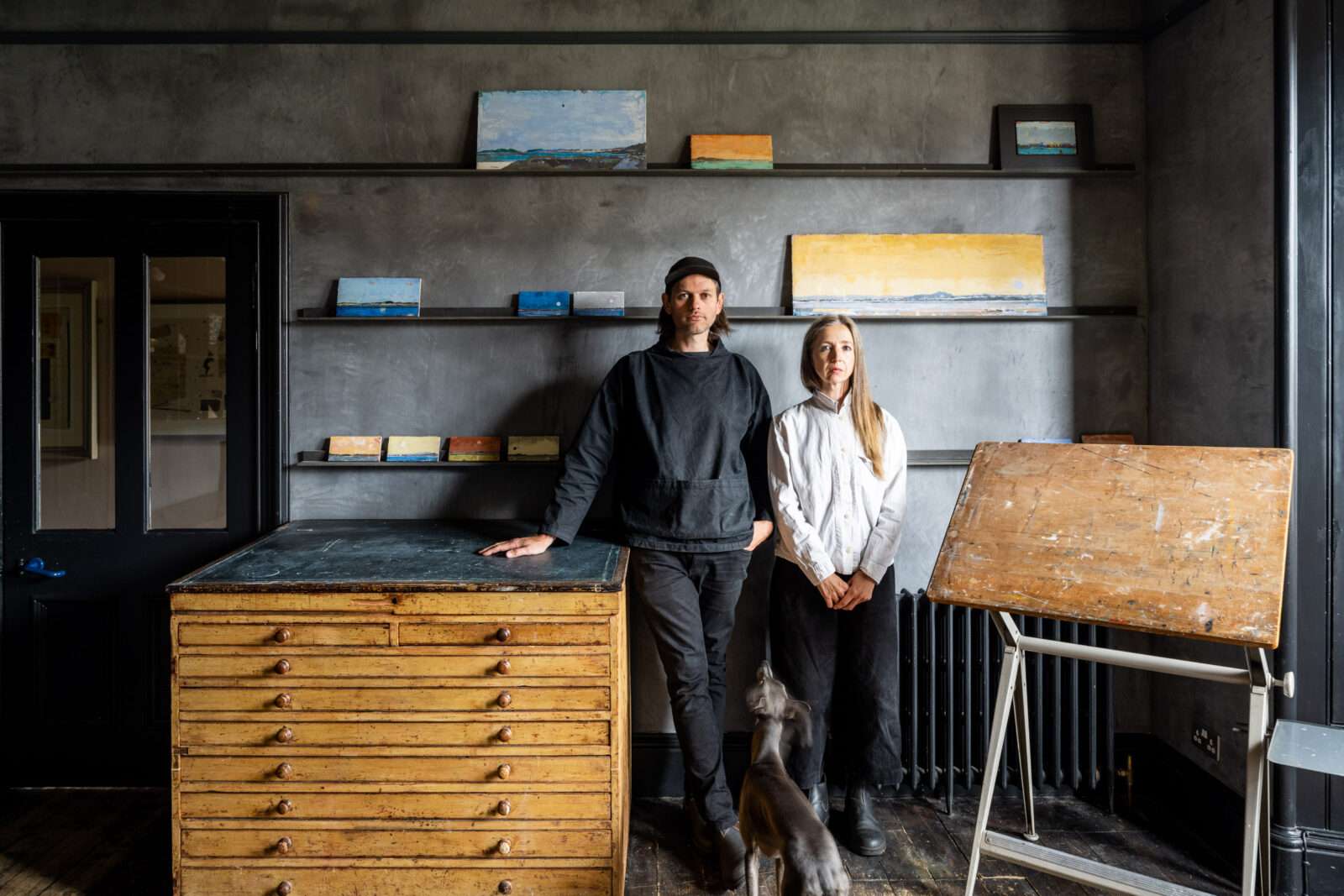
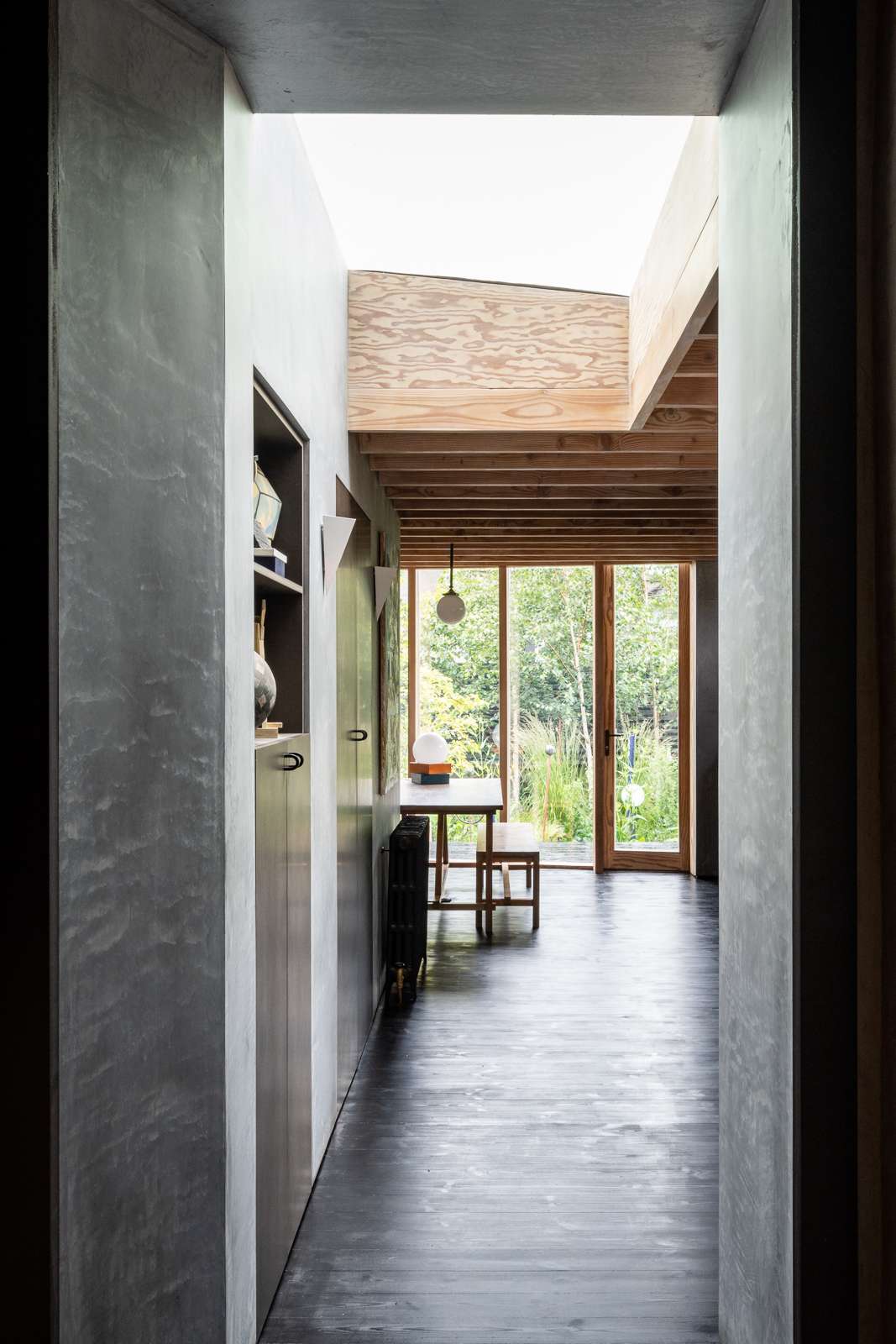
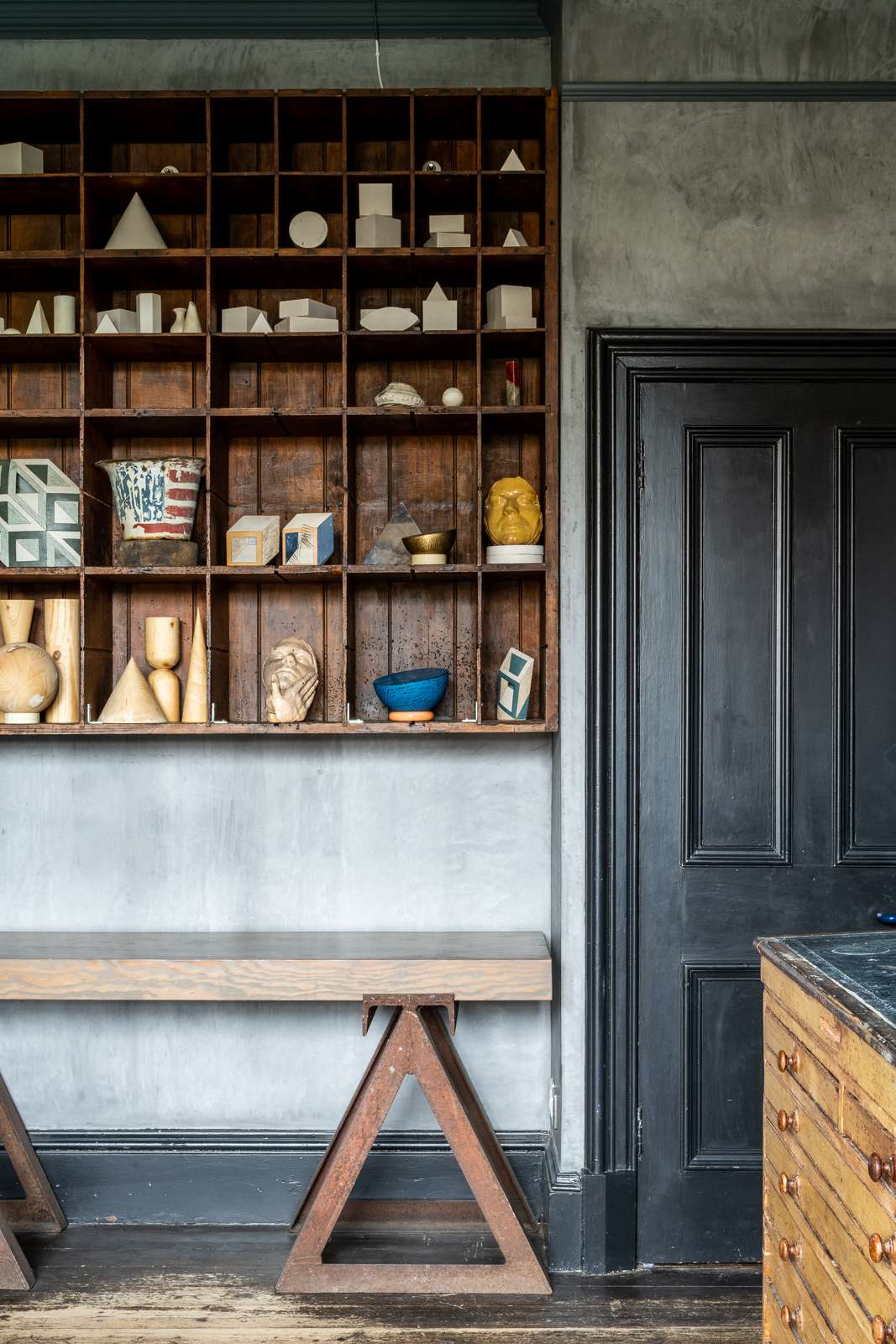
Neville: “When we were looking to buy our first home, we were originally looking at tenements – but then we saw this place. We brought our son to the viewing and he ran around the garden and ended up covered in raspberry juice from eating fruit straight from the bushes. The people selling it wanted it to go to a young family, so we were really lucky.”
Amy: “The house was built in 1890 and divided into two flats in the 1980s. We loved the fact that it was on the ground floor with direct access to outdoor space. We had always lived on upper floors before, so this was our first private garden.
“Our son’s school is on the promenade and we had seen the procession of children and adults walking along in the mornings, then playing on the beach after school and having bonfires there in the evening and at weekends. That all really appealed to us.”
Neville: “The house is in a conservation area so, when it came to renovating, we were careful to balance the old and the new. I started by making a wooden model of the building with three or four different extension designs to show our architect Calum Duncan. We wanted to create another bedroom, freeing up the one at the front so that Amy could use it as an art studio and to host exhibitions.
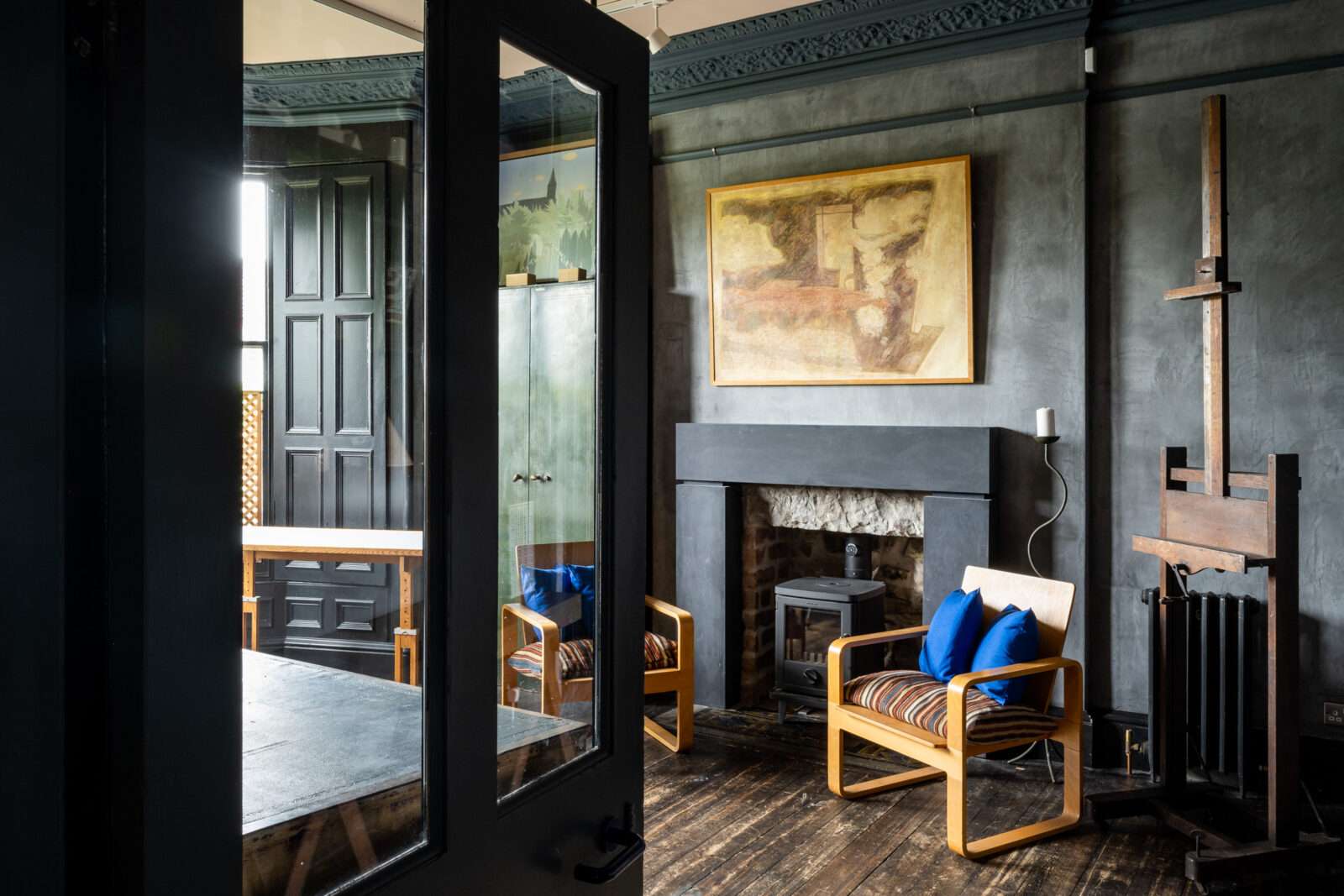
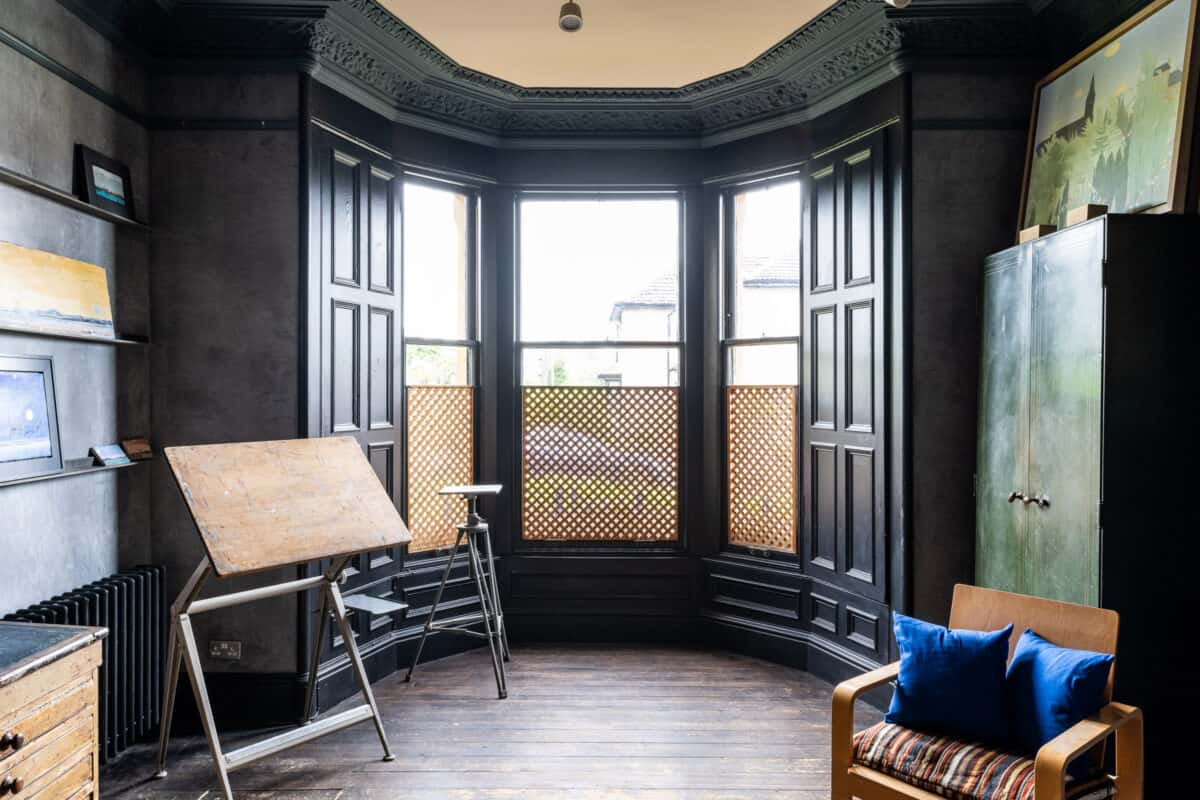
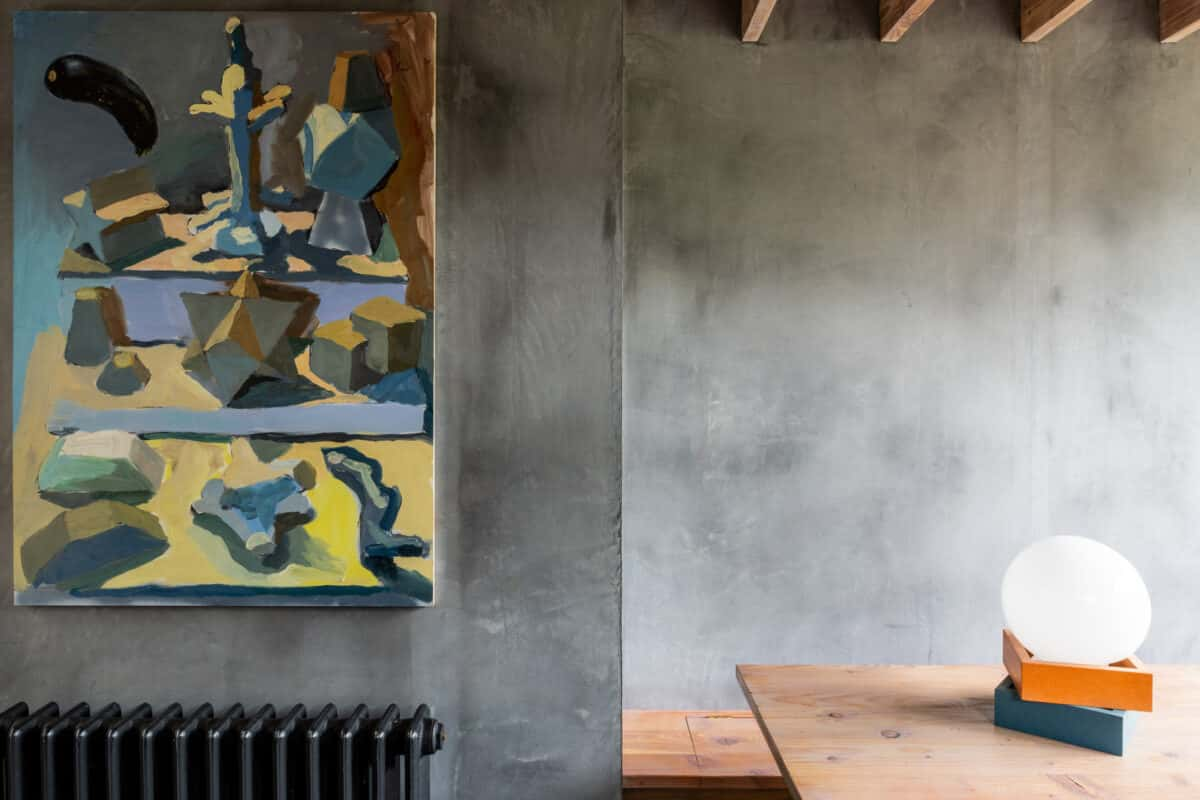
“We also created a little yard garden and side return. We liked the idea of being able to see from the front door through to the back of the house, so we worked hard to make that happen. There’s a balance of light and dark spaces, and of scale, all of which play with the layout.”
Amy: “We wanted the extension to contrast with the original building and were keen for it to be material-led. We used Douglas fir for the joists and the ceiling, which was washed with Osmo white wood wax. The windows are also Douglas fir and have sculptural fins to reflect light. The kitchen is made from Osmo-oiled Valchromat with a hi-mac worktop; you can sand it down if it gets marked and oil it again, giving it a nice patina.
“Externally, the extension is clad with Siberian larch and the decked platform is made of stained larch. The shuttered cast concrete outside is pigmented pink from the local East Lothian stone.”
Neville: “The walls are finished in magnetic plaster; it’s a British gypsum product that has graphite in it. Amy discovered it while looking for black plaster. We took a risk by choosing it for the whole kitchen because it was such a large area. We varnished it in a matt, breathable decorator varnish.
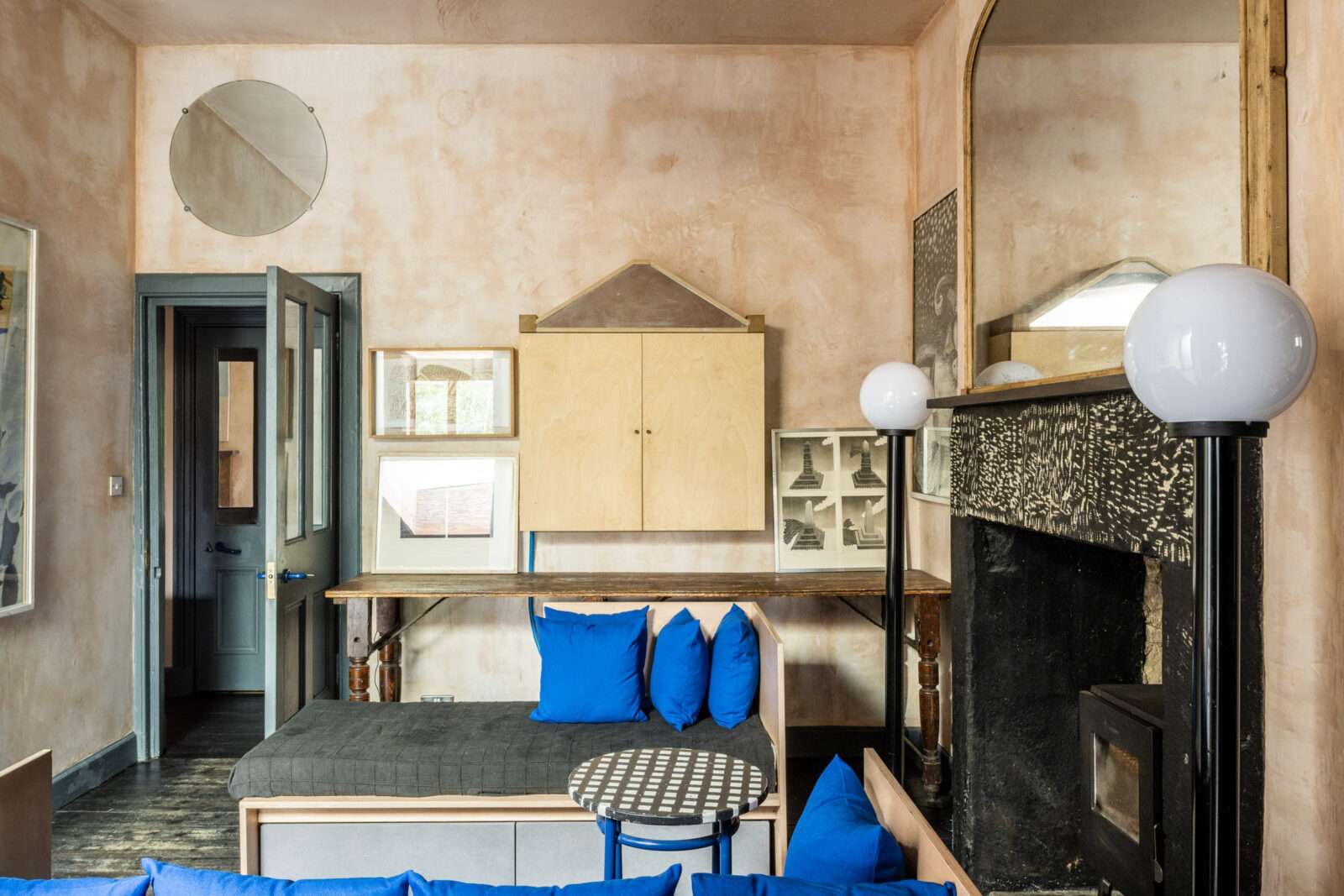
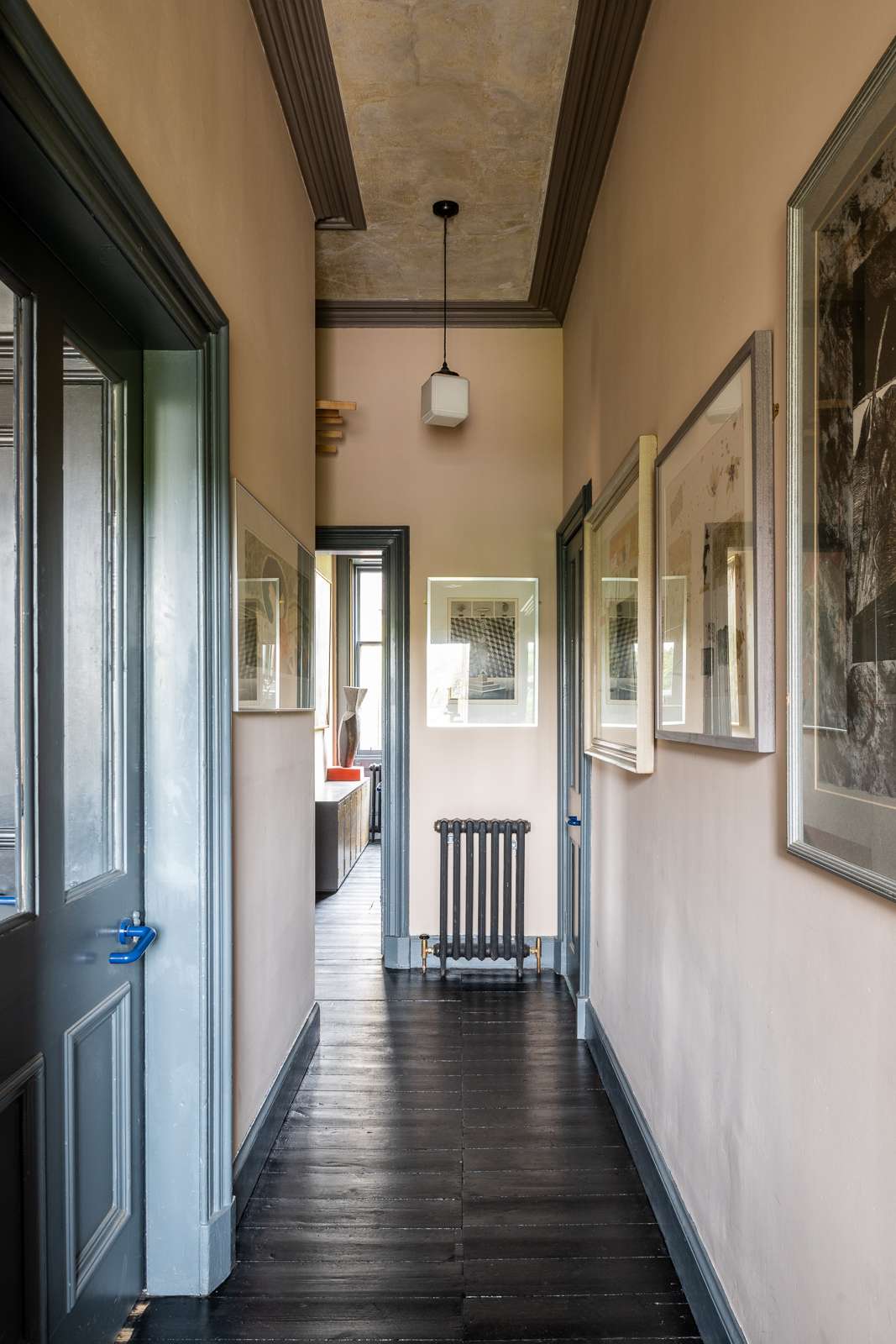
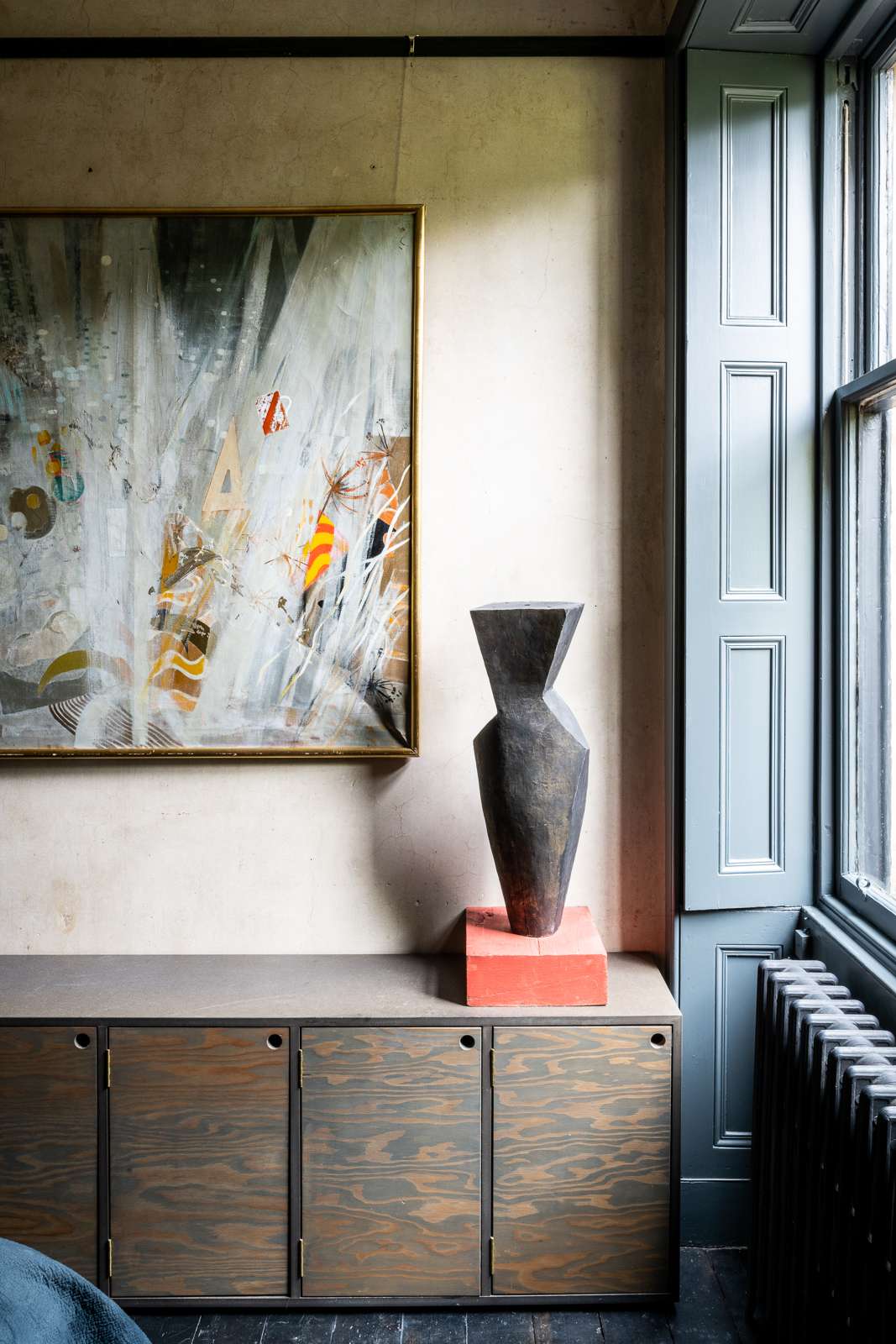
“The house is quite seasonal. The living room feels almost wintery – it’s very snug, with a big fire and a funny TV cabinet that’s like one where you’d keep a dartboard. We often have dinner on our knees while watching a film in front of the fire. I love coming home to that.”
Amy: “The kitchen is completely different – this is my favourite place to sit. It looks out on to the garden and is filled with natural light. I absolutely love the globe lights that we’ve got in the garden. They’re like ones you might get in a caravan or holiday park. My dad was an architect in the 1980s and worked on New Towns in places like Warrington; when I look at old photographs, they’ve got the same kind of lights on the housing estates there.
“In the studio, the furniture is mainly second-hand, with some bought at auction: the chest used to belong to Edinburgh council, there’s a 1980s Habitat drafting table, a 19th-century Parisian oak easel and some Magnus Olesen chairs, which were a Gumtree bargain. The green steel cupboards were bought from the local community hall and the pigeon holes and trestles from a local mechanic’s garage. And then Neville cast the fire surround from black Jesmonite. Our interiors are all based on thrift and a desire to space save.”
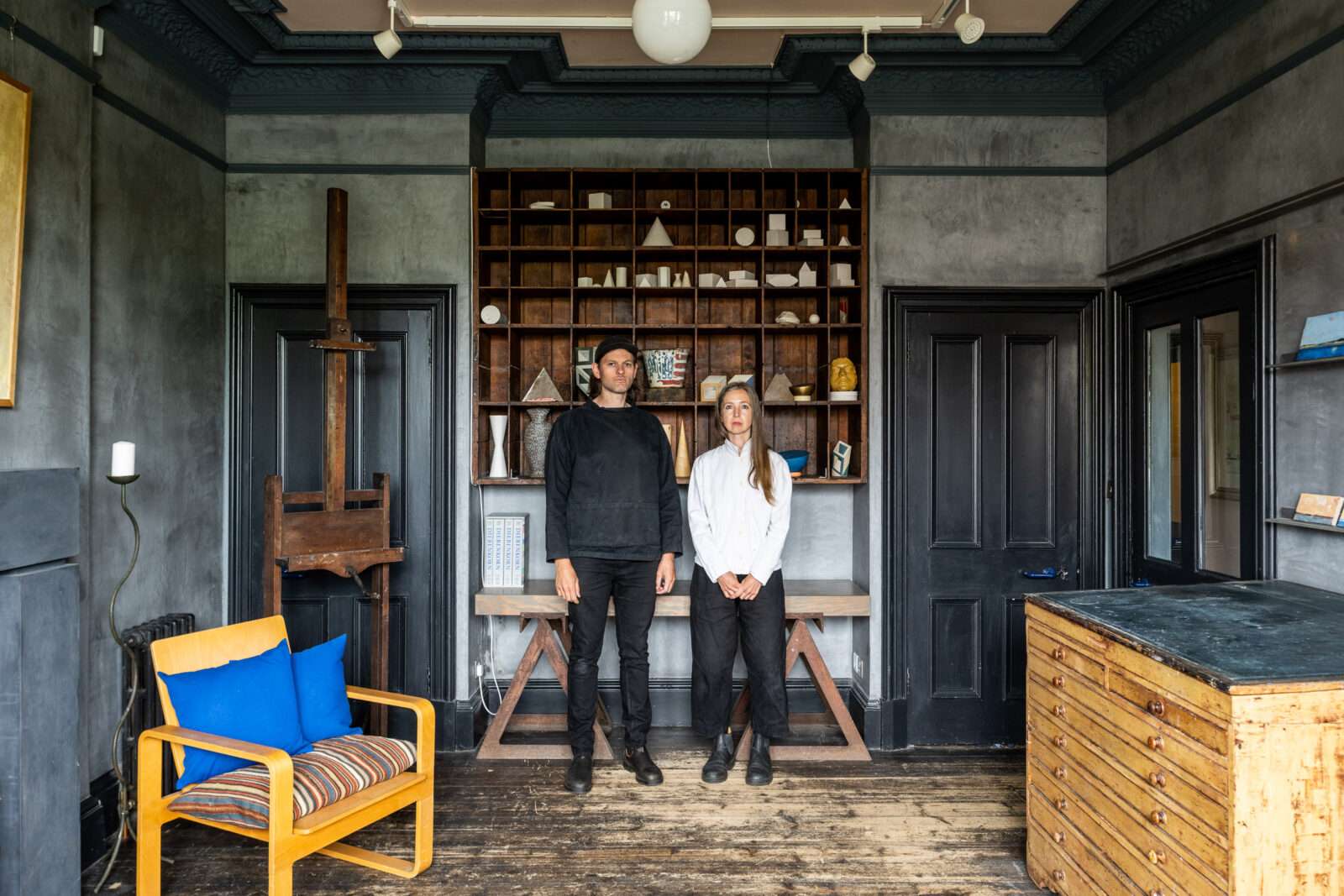
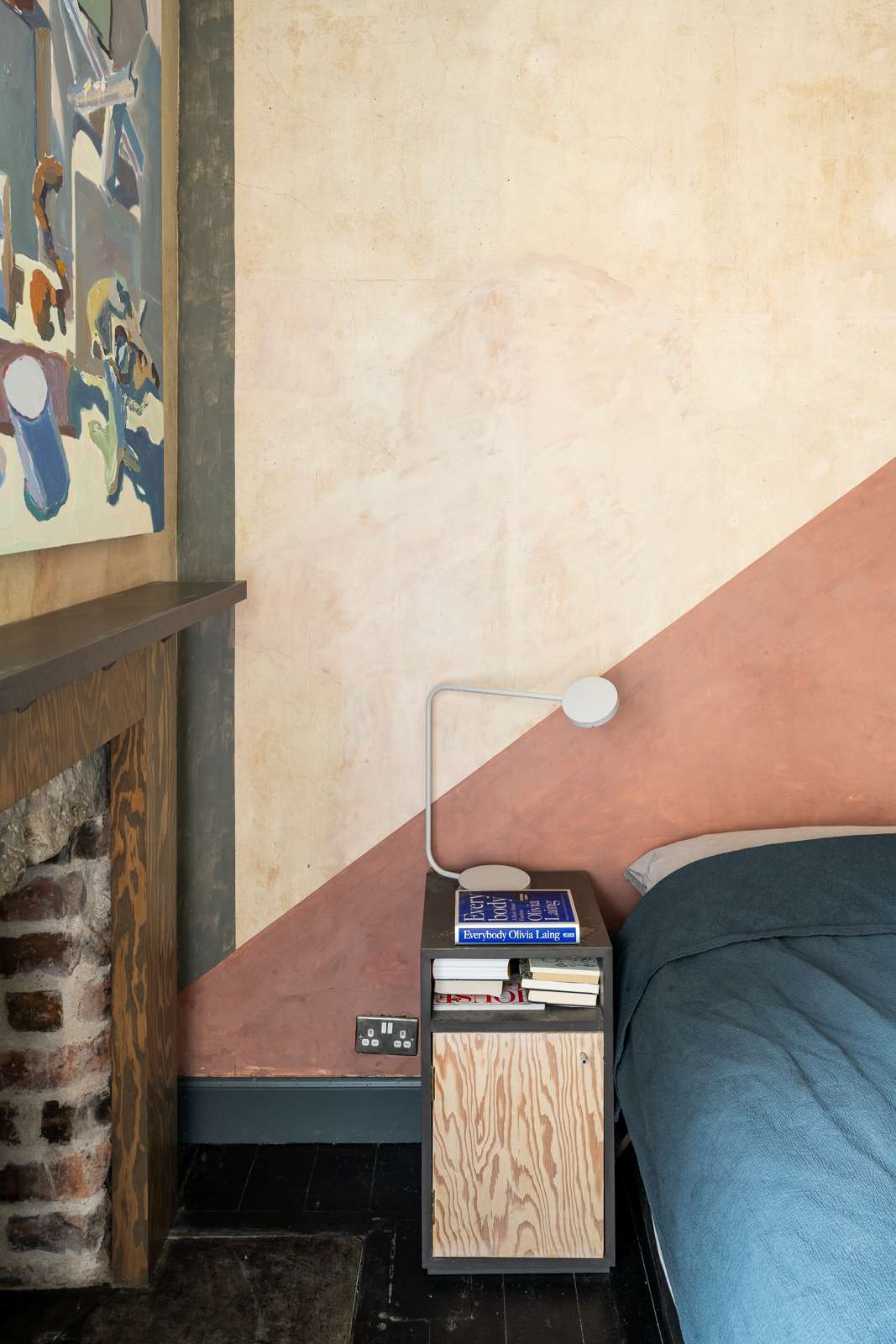
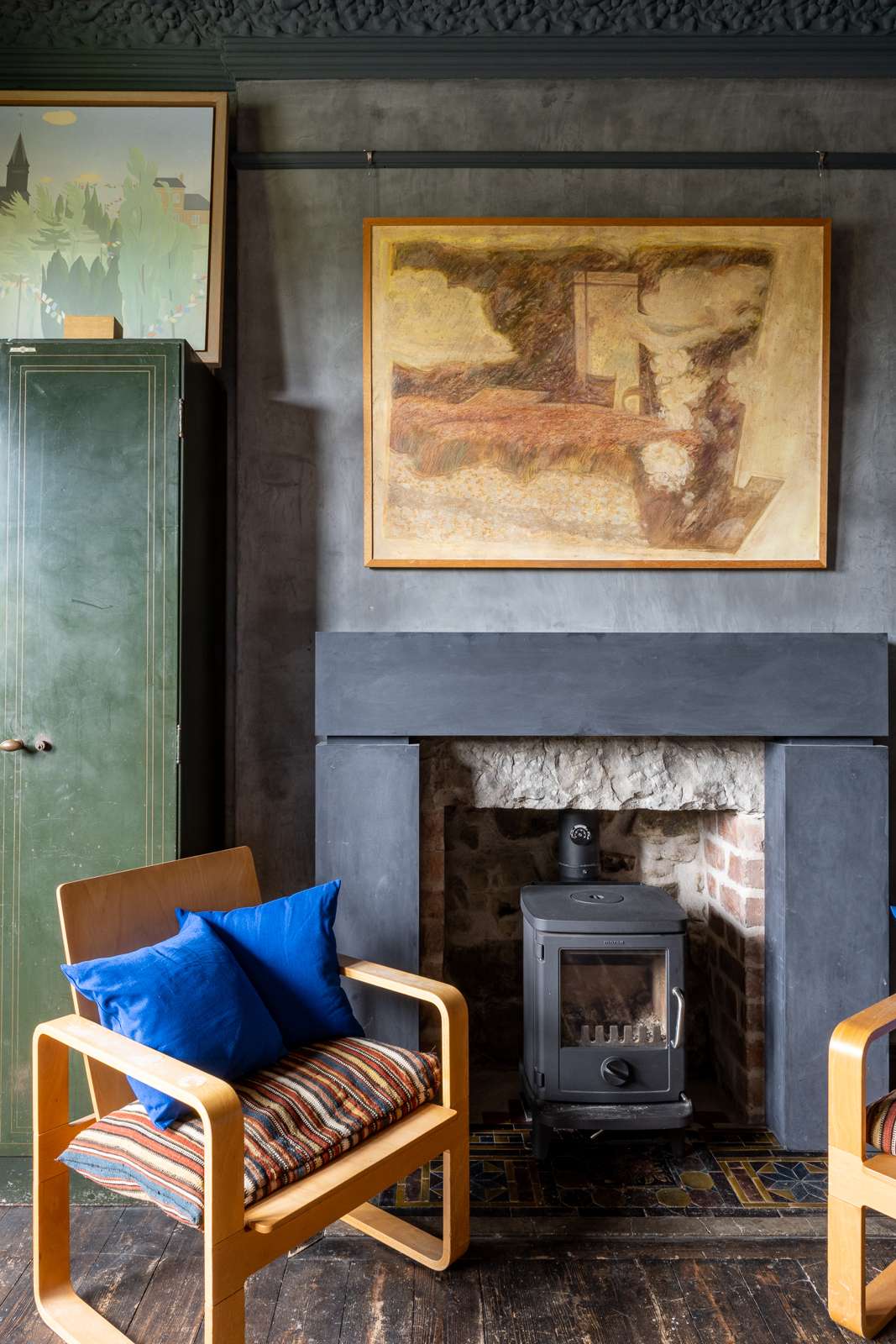
Neville: “I’m from a working-class background and we’ve both always been really resourceful. To maximise footprint and budget, I designed and made most of the furniture with reappropriated materials. The kitchen table is based on a Rietvelt design and the two sofas in the living room are based on Donald Judd pieces.”
Amy: “We have a large collection of Scottish art, bought directly from artists or from auctions. I fell in love with a particular aesthetic in Scottish painting, that of the Royal Scottish Academy painters from the east coast. The work we’ve acquired is by artists that aren’t necessarily well known outside Scotland and are quite underrated by collectors. They’re all excellent draughtspeople with a strong sense of composition with noticeably playful repeated motifs.
“The work currently hanging includes Ian Howard, Alexander Fraser, William Littlejohn, Sylvia Wishart, Barbara Balmer… The most recent acquisition is a small collection of plaster casts from the studio of Eduardo Paolozzi. I like having large objects and paintings in small rooms.”
Neville: “When it came to the garden, we worked with the landscape designer Nick Burton to create a planting plan and to discuss our design ideas.”
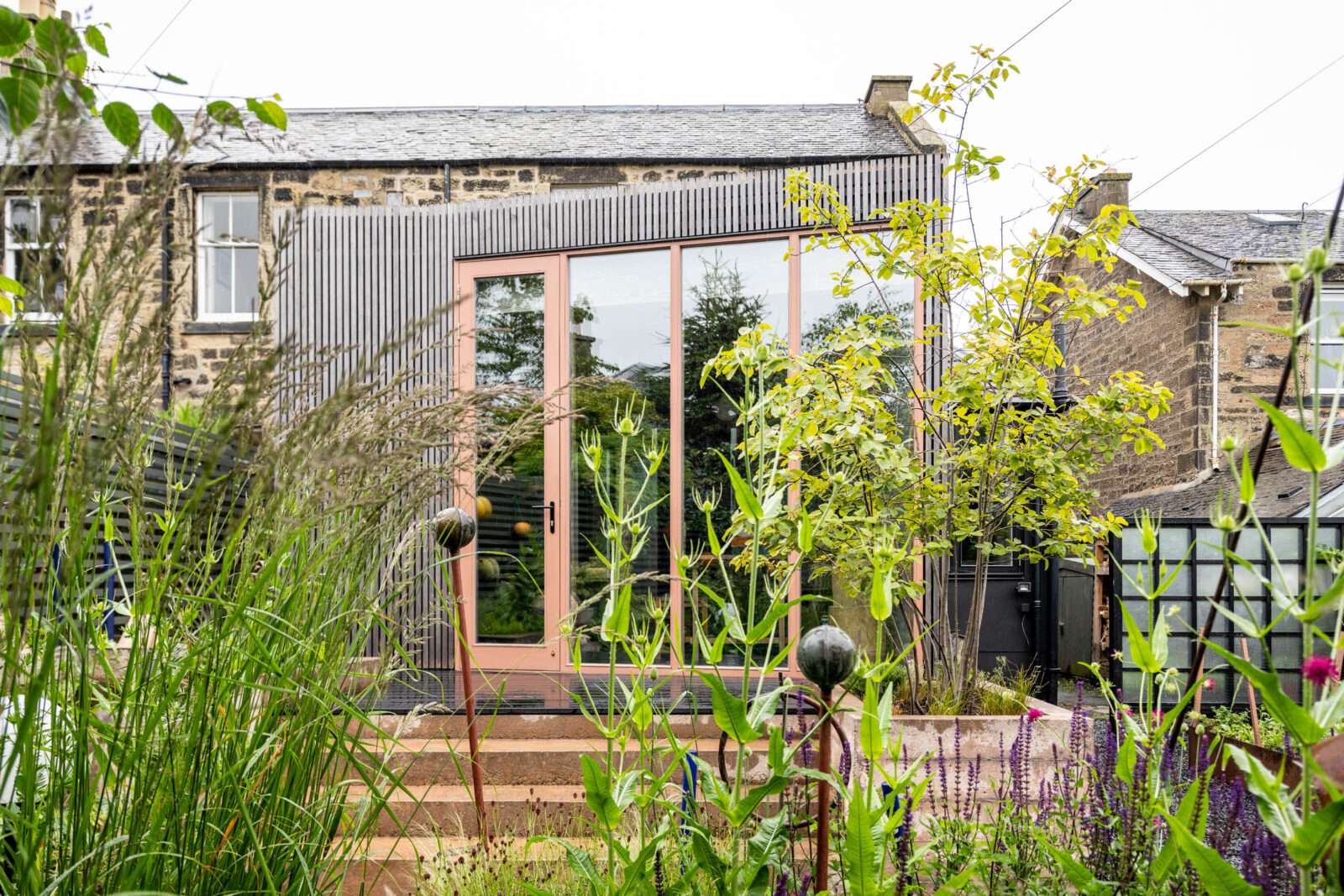
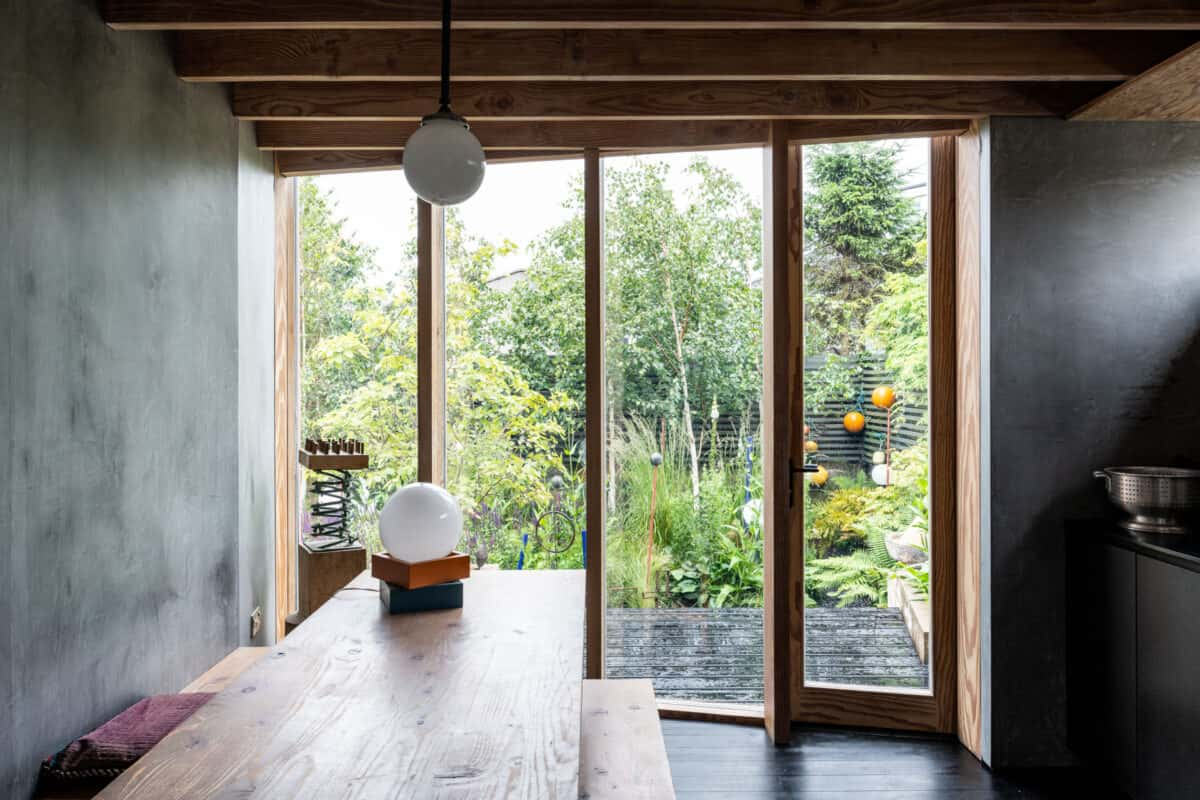
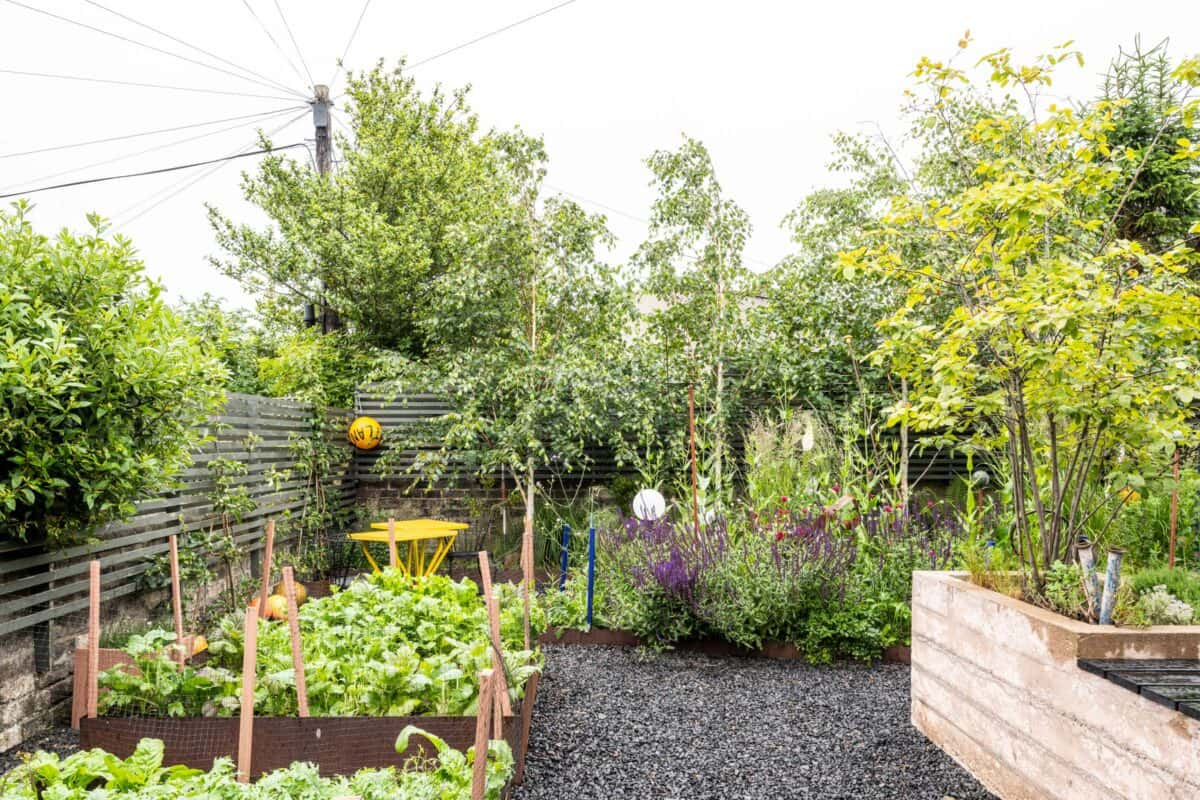
Amy: “We divided it into two areas, edible salad beds and ornamental planting. The angles of the planting beds reflect the angled window of the extension and that of the concrete planter by the back door. We’ve got five Jacquemontii silver birch and two espaliered apple trees for privacy.
“We made a screen from galvanised steel and larch, reminiscent of those made by the landscape designer George Carter – we love his book Garden Spaces. When the globe lights are on in the evening, they reflect off the steel, making it feel like an extension of the kitchen – it has a really special atmosphere.
Neville: We’ve learned so much from building our home. It’s been the biggest education. Working out how to use a space without being too conventional has been like solving a puzzle. But I’ve loved seeing what happens when you play around. Our tastes have changed – and it’s good to evolve. We’re looking forward to pushing things further with our next project, being more experimental, more materials-focused and more architectural.”
